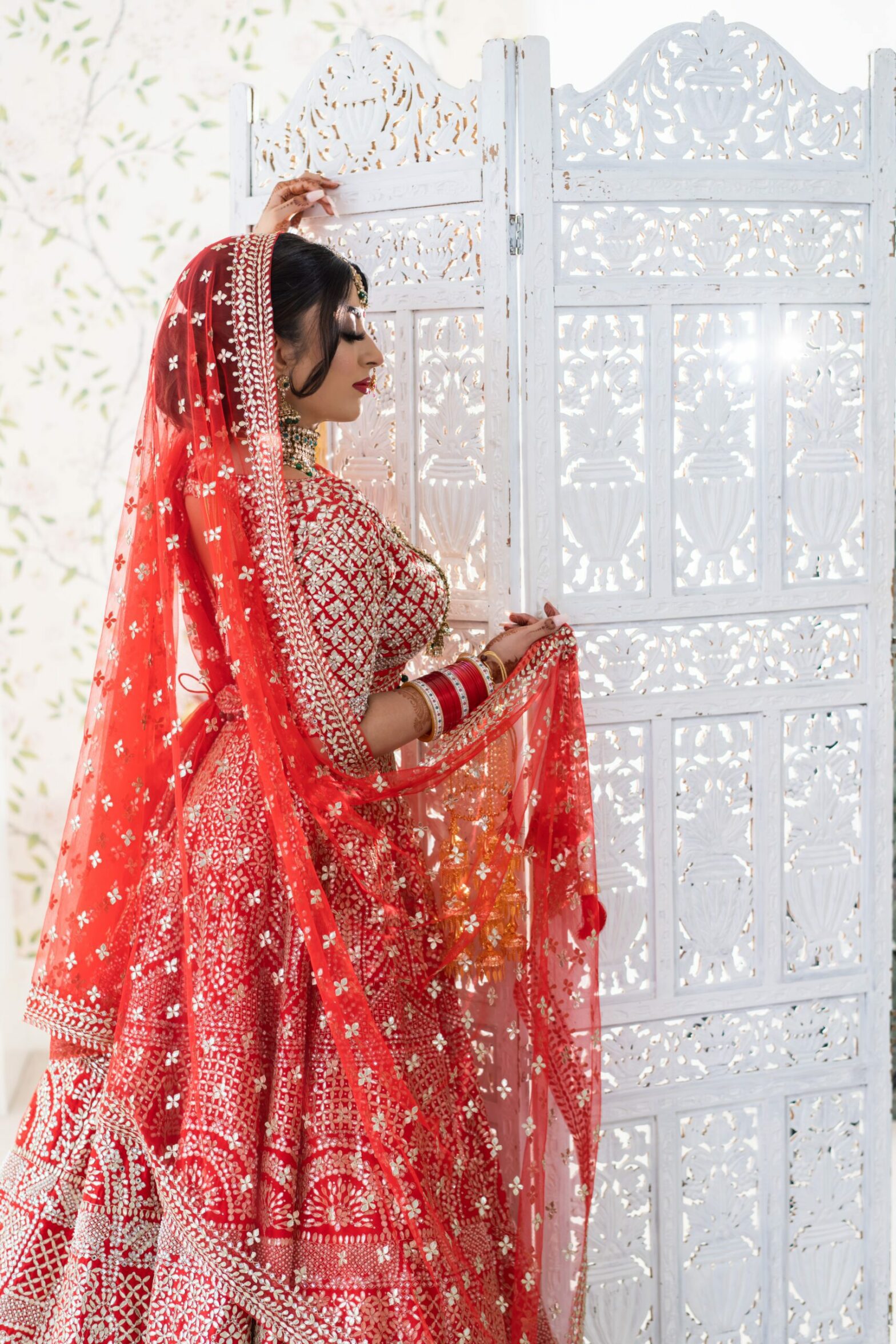Punjabis are known for their vibrant, expressive nature. This vitality extends to their weddings, which are colorful, exuberant and filled with singing and dancing. Whether simple or lavish, Punjabi weddings ensure non-stop celebration. Let’s explore the various rituals that enrich this cultural celebration.
Chooda Ceremony
The Chooda ceremony is a vital part of Punjabi weddings where the bride receives a set of 21 bangles from her maternal uncle, which are maroon and cream bangles, known as chooda. These bangles are purified with milk and rose petals before being placed on the bride’s wrists by friends and relatives. The Chooda symbolises blessings for the bride’s new life and is part of her solah shringar, representing prosperity. Traditionally worn for a period after the wedding, the Chooda holds cultural and emotional significance while adding to the bride’s traditional bridal attire.
Jaago
The Jago ceremony, also known as the Jaggo ceremony, is a customary pre-wedding practice observed in Punjabi and North Indian weddings. Typically occurring a day or two before the wedding, it entails the union of the bride and groom’s families in celebration and wedding preparations.
It signifies the act of “awakening.” This ceremonial event is a joyful celebration hosted by the maternal sides of both the bride and the groom. The families make a grand entrance at the wedding venue, accompanied by spirited singing and dancing.
During the Jago ceremony, female relatives take turns carrying a “gagger,” which is an embellished earthen pot adorned with lit candles. They engage in lively singing and dancing as they bear this pot. In addition to the earthen pot, participants dance with decorated sticks adorned with bells.
Milni
The Milni ceremony, a customary ritual frequently observed in North Indian weddings, especially in Punjabi and Sikh traditions, holds profound cultural and symbolic significance. This ritual represents the coming together of two families and the Milni acts as a formal introduction between both sides preceding the wedding. The groom’s family arrives at the Gurdwara or wedding venue to meet and greet the bride’s relatives. The male members of the bride’s family then extend a warm welcome to the groom by engaging in the exchange of flower garlands (a practice commonly observed in Sikh weddings) and presenting gifts in the form of cash and clothing.
Joota Chupai
Joota Chupai is an Indian wedding tradition where the bride’s female relatives playfully steal the groom’s shoes as he heads to the wedding ceremony. The groom’s family tries to prevent this. After the ceremony, the groom must negotiate to get his shoes back by offering compensation to the bridesmaids. The groom offers rings and a sum of money called ‘kaleechris’ to the bridesmaids. This tradition symbolises the bonding of the two families and adds fun to the wedding celebration.
The Anand Karaj is a significant commitment. The bride enters the Gurdwara accompanied with male relatives. Seated before the Guru Granth Sahib Ji, the Bride and Groom offer their obeisance and a prayer (Ardas) is recited, seeking blessings for a successful marriage. When a couple marries under the blessings of Guru Granth Sahib Ji, they are not only pledging their commitment to each other but also making a sacred commitment to the Guru. This entails living their lives in accordance with the Guru’s teachings and instructions. The couple’s union is seen as a spiritual merging with one another through the divine.
Lavans
Lavans” refers to a set of four hymns or stanzas that are central to the Anand Karaj ceremony, which is the Sikh marriage ceremony. The term “Lavans” is derived from the Punjabi word “Lavan,” which means “to join” or “to unite.” These hymns are taken from the Guru Granth Sahib Ji, the central religious scripture of Sikhism, and they emphasise the spiritual union of the bride and groom. These four wedding hymns symbolise stages of love and spiritual longing. As the couple walks around the Guru Granth Sahib Ji, the bride follows the groom, holding his scarf (palla).
Ardaas
The congregation recites a humble prayer (Ardaas) as a mark of respect. The moment is followed by Hukamnama, a randomly selected hymn from the Guru Granth Sahib. Gifts are exchanged and the families congratulate the couple.
Grand Reception
Following the Gurdwara ceremony, friends and family converge at the wedding venue for an evening of dancing and celebration. The festivity includes a lavish meal, spirited dancing, and a grand cake-cutting ceremony.
Doli Muklava
“Doli Muklava” is a Punjabi term that refers to the departure of the bride from her parents’ home after the wedding ceremony. It is a significant and emotional moment in Punjabi weddings and signifies the bride’s transition to her new home with her husband. Carried by her brothers or in an adorned car, she departs in a doli. Her mother-in-law welcomes her with water, symbolising acceptance.
Conclusion
Punjabi weddings are a vibrant celebration of love, tradition, and family bonds. Every stage reflects not only the union of two individuals but also the preservation of cultural heritage and cherished traditions.


